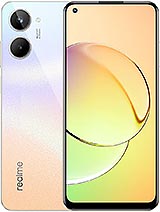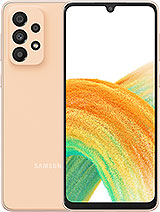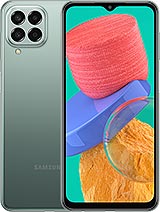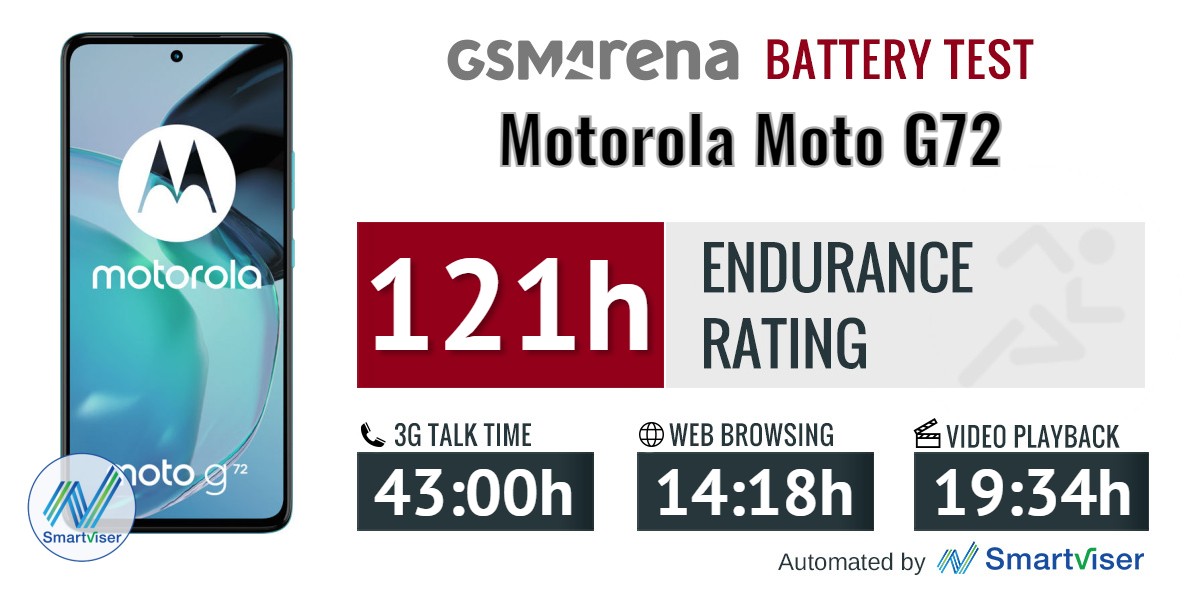Motorola Moto G72 review
Introduction
“For a high resolution display smartphone and best sound quality phone, choose Moto G72”, Motorola’s European landing page reads, while in India, you would be getting one “for all the colors of your life”.
Indeed, the Moto G72’s display is one of its key selling points – a 6.6″ 120Hz OLED with support for a billion colors, and it’s 1080p, hence the ‘high resolution’. As for sound, you do get stereo speakers, a headphone jack, and an FM radio, so there’s potential on that front too.
There’s one standout number in the spec sheet, and that’s in the weight field – at just 166g, the Moto G72 is remarkably light, and that’s while still packing a 5,000mAh battery. Motorola promises over 2 days of battery life (according to their lab tests), and we can see that being true, particularly with the relatively unassuming Mediatek Helio G99 chipset, which is missing 5G capability.
In the camera department, we’re looking at a 2+1 rear setup with a 108MP headliner, 8MP ultrawide and a 2MP macro, while selfies are taken care of by a 16MP punch hole unit – a solid midrange configuration by the looks of it. What you’ll be missing is 4K video recording, but that’s been the new normal lately in these budget-conscious devices.
Motorola Moto G72 specs at a glance:
- Body: 160.5×74.4×7.9mm, 166g; water-repellent design.
- Display: 6.6″ P-OLED, 1B colors, 120Hz, 1080x2400px resolution, 20:9 aspect ratio, 410ppi.
- Chipset: MediaTek MT8781 Helio G99 (6nm): Octa-core (2×2.2 GHz Cortex-A76 & 6×2.0 GHz Cortex-A55); Mali-G57 MC2.
- Memory: 128GB 6GB RAM, 128GB 8GB RAM; microSDXC (uses shared SIM slot).
- OS/Software: Android 12, planned upgrade to Android 13.
- Rear camera: Wide (main): 108 MP, f/1.7, 0.64µm, PDAF; Ultra wide angle: 8 MP, f/2.2, 118˚, 1.12µm; Macro: 2 MP, f/2.4.
- Front camera: 16 MP, f/2.5, (wide), 1.0µm.
- Video capture: Rear camera: 1080p@30/60fps; Front camera: 1080p@30fps.
- Battery: 5000mAh; 33W wired.
- Misc: Fingerprint reader (under display, optical); NFC; FM radio; 3.5mm jack; stereo speakers.
Motorola Moto G72 unboxing
The Moto G72 ships in the same navy box as all recent G-series Motos – the recycled brown boxes are reserved for the Edge series. The contents are more or less standard.
The phone arrives already in a transparent soft silicone case – hardly fancy, but functional nonetheless. Underneath, you’ll find the 33W TurboPower adapter and a USB-A-to-C cable for charging and data transfer.
Design, build quality, handling
The single most remarkable thing about the Moto G72’s physical properties is how light it is. At just 166g, it’s one of the more pocketable handsets you can get, and that’s despite it actually being a ‘full-size’ 6.6-inch device with a 5,000mAh battery inside.

Sure, the dimensions reflect the size of those components, and both the footprint and the thickness are more or less ‘standard’ for the class. But the curved rear edges mask the thickness very well (not that at 7.9mm it’s all that thick to begin with), while the discrepancy between the low weight and what’s essentially ‘average’ size makes the G72 feel even lighter.

It’s no magic how they’ve pulled it off, of course. The Moto G72 relies heavily on plastic for its build, so you won’t be touching ‘premium’ materials – both the rear panel and the frame is plastic. While that doesn’t sound posh, it should be durable, and it keeps weight down.
Motorola likes to label most of its phones as splash-resistant, and so is the Moto G72. There’s a formal IP52 rating in the spec sheet, so there is some standardization behind those words.

Our review unit is the Meteorite Gray colorway, and it starts off as black, but it will show all sorts of gray hues depending on how light hits it. The more widely available alternative is called Polar Blue and has a similar color-changing effect but in the bluish-green part of the color spectrum. Also in existence is a Mineral White option, but that’s only found in some regions.

The frosted finish of our review unit does tend to pick up some smudges and is also more slippery than most – not a great combo. You could use the included case, which will provide an extra layer of protection and better grip, but it does take away from the G72’s slimness and lightness appeal. There’s also the matter that it gives button pressing a particularly spongy sensation – the buttons are decently clicky on their own, but not so with the case.

The buttons themselves are located on the right, volume rocker above the power button. Their placement leaves little to be desired – they’re easy to reach with either hand.
We could complain a little about the G72’s fingerprint reader placement – the optical underdisplay sensor is a bit too low for our liking, but since the phone is so light, operating it doesn’t go as far as posing a threat to the phone’s life. As for the actual recognition procedure, we found it to be uneventful – it does the job, no issues.

It’s worth pointing out that the supposedly more upmarket Moto G82 has a side-mounted capacitive fingerprint sensor, while the more affordable G72 gets an unerdisplay one. You could be one of those people who prefer the old-school solution, and that’s okay, but we appreciate the G72’s more contemporary approach.

The tour of the periphery does hold some throwbacks to the olden days – in a good way, we’d say. You get a headphone jack on the bottom, while the card tray on the left will let you trade the second SIM for a microSD card.


3.5mm jack on the bottom • Hybrid card slot
The G72’s OLED display takes up most of the front of the handset – bezels are about what you can expect from a modern smartphone, mid-tier as it may be. Another ‘standard’ feature is the selfie camera punch-hole – we’re way past making a big deal out of those.
We’d have appreciated knowing what type of protective glass covers the front, but Motorola’s specs remain mum on the subject.

Overall, the Moto G72 is hardly an impressive-looking phone – middle-of-the-road describes its design better. It’s anything but ugly, though, and, most importantly, it’s got an air of compactness going for it.

Bright 120Hz OLED display
The Moto G72 is equipped with a 6.6-inch OLED display with a 1080x2400px resolution in a 20:9 aspect for a pixel density of 402ppi. It supports a 120Hz refresh rate – no half-baked 90Hz solutions here.

It’s mighty bright too – possibly the brightest in its class. We measured 1015nits with the Adaptive brightness toggle enabled and the phone placed under bright ambient light – other OLEDs for the money typically hover around the 700nits mark. The 501nits we got manually on the slider is more or less the ‘standard’ value.
| Display test | 100% brightness | ||
| Black, |
White, |
||
| 0 | 501 | ∞ | |
| 0 | 1015 | ∞ | |
| 0 | 496 | ∞ | |
| 0 | 690 | ∞ | |
| 0.289 | 454 | 1571:1 | |
| 0.37 | 552 | 1492:1 | |
| 0 | 489 | ∞ | |
| 0 | 1004 | ∞ | |
| 0 | 516 | ∞ | |
| 0 | 946 | ∞ | |
| 0 | 407 | ∞ | |
| 0 | 728 | ∞ | |
| 0 | 455 | ∞ | |
| 0 | 647 | ∞ | |
| 0 | 427 | ∞ | |
| 0 | 610 | ∞ | |
| 0 | 465 | ∞ | |
| 0 | 736 | ∞ | |
| 0 | 473 | ∞ | |
| 0 | 756 | ∞ | |
In terms of color reproduction, the G72 isn’t quite as great, but it’s not too bad either. In the default Saturated mode, the phone showed about average accuracy for our DCI-P3 targets, with a similarly middle-of-the-pack blue shift to the white point and the grayscale swatches. That’s well within the norm, but we have more of an issue here: bumping the temperature slider towards the warm end made things progressively worse, turning from blue to green to yellow, instead of giving us a neutral rendition. We’d stick with the default setting.
Normal mode, meanwhile, is tuned for sRGB content and is generally very close to target, albeit with a faint cyan shift to the grays.
The refresh rate menu gives you three options – 60Hz, 120Hz, and Auto. Both the fixed refresh rate modes will give you just that – hard settings that the phone will respect (almost) unconditionally. In 120Hz mode, you’ll get that maximum refresh rate in browsers, video playing apps, games, the lot.

The Auto mode is also quite liberal in its use of 120Hz. It will default to that for games that support high frame rates, and it will maintain 120Hz for browsers, as long as there’s moving content in them. In most other uses, the phone will ramp down to 60Hz after a few seconds of idling, only to shoot back up to 120Hz when you interact with it. Every now and then, it would show 90Hz, too, mostly as an intermediate step when going from 120 to 60, rather than a mode it maintains for any significant amount of time. We also saw 48Hz on the not-always-on display.
HDR support is somewhat of a murky topic on the Moto G72. At the phone’s launch, we were led to believe it supported HDR10+, but mentions of any HDR capability can’t be found in Motorola specsheets now. Mediatek doesn’t claim any HDR support for the Helio G99 chip either. Hardware checking apps report HDR10 support after all (not HDR10+), but in practice, we didn’t get HDR streams anywhere, not even YouTube. The Widevine L1 certification does enable FullHD streaming, though, which is nice.
Perhaps it’s too much to expect everything from a phone in this price range, and we should appreciate the Moto G72’s display for its high brightness, straightforward refresh rate handling, and general OLED goodness, instead of fixating on what it doesn’t have.
Motorola Moto G72 battery life
Looking at the Moto G72 (and, even more so, holding it), you’d find it hard to believe it has a 5,000mAh battery inside. But it does, and it shows in its endurance numbers.
We clocked 43 hours on a voice call on this Moto, making it a fine choice for those who still spend a lot of time talking on their phones. It’s pretty great with the display on, too – 14+ hours of web browsing (at a constant 120Hz) and over 19 hours of looping videos round up a very compelling showing in active use. With the pretty efficient standby thrown into the mix, the overall Endurance rating worked out to 121h.
Our battery tests were automated thanks to SmartViser, using its viSerDevice app. The endurance rating denotes how long the battery charge will last you if you use the device for an hour of telephony, web browsing, and video playback daily. More details can be found here.
Video test carried out in 60Hz refresh rate mode whenever possible. Web browsing test done at the display’s highest refresh rate whenever possible. Refer to the respective reviews for specifics. To adjust the endurance rating formula to match your own usage – check out our all-time battery test results chart.
Charging speed
The Moto G72 ships with a 33W TurboPower adapter. Looking at the numbers printed on it, it’s not USB PowerDelivery compliant, and its USB-A port is another indication it’s not going to be as versatile as you might like it. Still, for topping up the Moto itself, it does a respectable job.

The Moto was showing 53% half an hour into a charge from flat, while getting all the way to 100% took a total of 74 minutes. Allow another 17 minutes for the phone to actually reach a ‘Charged’ state, though – a bit longer than average.
The G72 is more or less in line with the norm for the class in both the 30-minute and 100% metrics. It’s roughly on par with the G82 and notably better than the G62, but the Edge 30 Neo is, conversely, a lot quicker.
Speaker test
Motorola has fitted the G72 with what’s now become the conventional stereo speaker setup – a ‘main’ speaker on the bottom, joined by the earpiece, which takes on the other channel. The earpiece gets to the left when the phone is held vertically, and the channels get switched around to match the orientation in landscape.


Bottom speaker • Top speaker/earpiece
The Motorola Moto G72 earned a ‘Good’ rating for loudness in our test, same as the G82 and a notch below the ‘Very Good’ G62 5G (which, in all fairness, only barely made it there). To our ears, the G72 sounds nearly identical to the G82, meaning you’d get clean output with well-defined treble and nice vocals but little in the way of low-end presence.
Use the Playback controls to listen to the phone sample recordings (best use headphones). We measure the average loudness of the speakers in LUFS. A lower absolute value means a louder sound. A look at the frequency response chart will tell you how far off the ideal “0db” flat line is the reproduction of the bass, treble, and mid frequencies. You can add more phones to compare how they differ. The scores and ratings are not comparable with our older loudspeaker test. Learn more about how we test here.
The usual Moto additions, Android 12 underneath
The Moto G62 runs Android 12, so it’s not particularly up to date when it comes to the OS core. We did get a couple of small updates on our review unit over the past few weeks, so while Motorola may be a bit behind schedule with the OS releases, ongoing support isn’t lacking. As is the norm with Motorola handsets, you’d be getting a largely stock UI, with minimal in-house tweaks, including some long-standing proprietary features.

The UI and overall appearance are close to stock Android. That includes the large pill-shaped quick toggles in the notification shade and it also means no auto brightness toggle – Google keeps that in the display settings and Motorola follows suit.
The recent apps menu that displays apps in a carousel formation and the app drawer are unchanged as well.








Lockscreen • Homescreen • Folder view • App drawer • Task switcher • Notifications • Quick toggles
As is usually the case, Motorola has added a handful of useful extras. They are all placed in a Moto settings app that lists them in categories.
The first one is Personalization which allows you to tinker with fonts, app icons layout, accent colors, icon shape and themes.
One thing that’s hard to quantify is the Moto G72’s scaling which by default is smaller than usual – in a good way, if that makes sense. You can of course change that to your liking in either direction, but the default strikes this particular reviewer as just right.












Moto app • Moto app • Moto app • Personalization
The more useful additions, however, involve gestures. The iconic ones – karate chop for turning on the flashlight or twisting your wrist to open up the camera app are here. There’s also the Power touch (double tap on the power button) that brings out an additional app panel from the right edge of the display. It works exactly how the smart sidebar does in other Android skins.
The Attentive display keeps the screen on when the front camera detects a face looking at it so the display won’t go dark when you are halfway through an article. Peek display lights up the lockscreen once the device senses you are close and you pick up the phone. It uses the proximity sensor and the accelerometer to detect motion. And in case there’s a notification, you can just tap and hold on to the notification icon to see a quick preview of the text. The Peek display feature is almost as good as an Always-on functionality, but we would have preferred to have the ability to choose.






Moto gestures • Quick launch • Quick capture • Display features
A relatively new feature is the Overcharge protection toggle in the Battery menu. It will cut off charging once it detects that the phone hasn’t been unplugged for three days straight and keep the battery charged at a much healthier 80%.
Predictably, the Moto G72 is missing the “Ready For” feature Motorola is offering on some of its Edge models.
Performance and benchmarks
The Moto G72 runs on the Helio G99 chipset, a no-frills Mediatek chipset with no 5G connectivity. Manufactured on a 6nm process, it’s geared towards efficiency, though its octa-core CPU is still decently capable thanks to a couple of Cortex-A76 cores clocked at up to 2.2GHz (the other 6 Cortex-A55 cores max out at 2.0GHz). The GPU is a Mali-G57 MC2.

A single storage option appears to be in existence, the 128GB easily expandable via microSD (though you’d have to sacrifice the second SIM for that). RAM is either 6GB or 8GB (our review unit).
The Moto G72 is on par with the G62 (SD480) in single-core CPU performance, but a bit behind the G82 (SD695). Other SD695 handsets also have an advantage over the Moto, while the Exynos 1280 Galaxy A53 5G and A33 5G are even further ahead. The gaps are narrower in multi-core testing, though the G72 does maintain its spot in the lower half of the charts.
GeekBench 5 (single-core)
Higher is better
-
Galaxy A53 5G
743 -
Galaxy A33 5G
742 -
Realme 10 Pro
698 -
Galaxy A23 5G
676 -
Moto G82
671 -
Motorola Edge 30 Neo
670 -
Nokia G60
668 -
Nokia X30
663 -
Realme 10
567 -
Xiaomi Poco M5
550 -
Motorola Moto G72
546 -
Moto G62
543 -
Redmi Note 11S
526 -
Realme 9
380 -
Redmi Note 11
376
GeekBench 5 (multi-core)
Higher is better
-
Realme 10 Pro
2021 -
Moto G82
1977 -
Motorola Edge 30 Neo
1964 -
Galaxy A23 5G
1940 -
Nokia X30
1920 -
Nokia G60
1908 -
Galaxy A33 5G
1900 -
Xiaomi Poco M5
1896 -
Galaxy A53 5G
1891 -
Redmi Note 11S
1873 -
Motorola Moto G72
1842 -
Realme 10
1762 -
Moto G62
1697 -
Redmi Note 11
1662 -
Realme 9
1601
The Moto G72 climbs higher in Antutu, actually, marginally beating the Galaxy A53 and ranking inbetween SD695 competition.
AnTuTu 9
Higher is better
-
Nokia X30
403732 -
Nokia G60
402664 -
Realme 10 Pro
401860 -
Galaxy A33 5G
394918 -
Xiaomi Poco M5
386311 -
Realme 10
385829 -
Motorola Moto G72
383317 -
Motorola Edge 30 Neo
380818 -
Moto G82
380812 -
Galaxy A53 5G
379313 -
Galaxy A23 5G
318821 -
Redmi Note 11S
308741 -
Moto G62
303072 -
Realme 9
290097 -
Redmi Note 11
244526
GPU performance is once again in the ‘satisfactory’ category – you won’t be getting any fps records out of the Moto G72, and competing offerings based on the Snapdragon 695 will deliver a better gaming experience.
GFX Aztek ES 3.1 High (onscreen)
Higher is better
-
Galaxy A33 5G
15 -
Galaxy A53 5G
15 -
Moto G82
12 -
Motorola Edge 30 Neo
12 -
Galaxy A23 5G
12 -
Nokia X30
12 -
Nokia G60
12 -
Realme 10 Pro
11 -
Realme 10
10 -
Moto G62
9.7 -
Motorola Moto G72
9.3 -
Xiaomi Poco M5
8.9 -
Redmi Note 11S
8.3 -
Realme 9
5 -
Redmi Note 11
4.6
GFX Aztek ES 3.1 High (offscreen 1440p)
Higher is better
-
Galaxy A33 5G
10 -
Galaxy A53 5G
10 -
Moto G82
7.9 -
Nokia X30
7.9 -
Motorola Edge 30 Neo
7.8 -
Realme 10 Pro
7.8 -
Nokia G60
7.8 -
Galaxy A23 5G
7.6 -
Moto G62
6.5 -
Realme 10
6.5 -
Motorola Moto G72
6 -
Xiaomi Poco M5
5.9 -
Redmi Note 11S
5.5 -
Realme 9
3.2 -
Redmi Note 11
3.1
GFX Aztek Vulkan High (onscreen)
Higher is better
-
Galaxy A33 5G
15 -
Galaxy A53 5G
15 -
Moto G82
13 -
Motorola Edge 30 Neo
12 -
Galaxy A23 5G
12 -
Realme 10 Pro
12 -
Nokia X30
12 -
Nokia G60
12 -
Moto G62
10 -
Realme 10
9.3 -
Motorola Moto G72
8.7 -
Xiaomi Poco M5
8.2 -
Redmi Note 11S
7.7 -
Realme 9
4.9 -
Redmi Note 11
4.8
GFX Aztek Vulkan High (offscreen 1440p)
Higher is better
-
Galaxy A33 5G
10 -
Galaxy A53 5G
10 -
Realme 10 Pro
8.3 -
Moto G82
8.2 -
Motorola Edge 30 Neo
8.2 -
Nokia X30
8.2 -
Nokia G60
8.2 -
Galaxy A23 5G
8 -
Moto G62
6.7 -
Realme 10
6.1 -
Motorola Moto G72
5.5 -
Xiaomi Poco M5
5.3 -
Redmi Note 11S
5.1 -
Realme 9
3.2 -
Redmi Note 11
3.1
GFX Car Chase ES 3.1 (onscreen)
Higher is better
-
Galaxy A33 5G
20 -
Galaxy A53 5G
19 -
Realme 10
17 -
Nokia X30
17 -
Nokia G60
17 -
Moto G82
16 -
Motorola Edge 30 Neo
16 -
Galaxy A23 5G
16 -
Realme 10 Pro
16 -
Moto G62
14 -
Motorola Moto G72
13 -
Xiaomi Poco M5
12 -
Redmi Note 11S
12 -
Realme 9
7.3 -
Redmi Note 11
6.8
GFX Car Chase ES 3.1 (offscreen 1080p)
Higher is better
-
Galaxy A33 5G
23 -
Galaxy A53 5G
23 -
Moto G82
21 -
Motorola Edge 30 Neo
20 -
Nokia X30
20 -
Nokia G60
20 -
Galaxy A23 5G
19 -
Realme 10 Pro
19 -
Moto G62
16 -
Motorola Moto G72
15 -
Xiaomi Poco M5
15 -
Realme 10
14 -
Redmi Note 11S
14 -
Realme 9
8.2 -
Redmi Note 11
8
3DMark Wild Life Vulkan 1.1 (offscreen 1440p)
Higher is better
-
Galaxy A53 5G
2292 -
Galaxy A33 5G
2260 -
Xiaomi Poco M5
1321 -
Realme 10
1320 -
Motorola Moto G72
1255 -
Realme 10 Pro
1218 -
Nokia X30
1214 -
Moto G82
1211 -
Motorola Edge 30 Neo
1201 -
Galaxy A23 5G
1200 -
Redmi Note 11S
1101 -
Moto G62
971 -
Redmi Note 11
439
3DMark Wild Life Extreme (offscreen 1440p)
Higher is better
-
Xiaomi Poco M5
369 -
Realme 10
366 -
Nokia X30
363 -
Nokia G60
362 -
Motorola Moto G72
347
One of the benefits of lower-end chipsets is that they tend not to throttle – they may not be putting out huge numbers, but they can maintain them essentially indefinitely. That’s what we observed on the Moto G72 in both the CPU Throttling test and the stress tests in 3DMark.
108MP primary camera, 8MP ultrawide, 16MP/4MP selfies
The Moto G72 has a reasonably well-specced sort of triple camera setup on its back. Headlined by a 108MP main unit, it also includes an 8MP ultrawide, and there’s a 2MP dedicated macro for good measure. On the front, a 16MP camera takes care of selfies.

The primary camera uses the Samsung HM6 sensor – one of the latest Nona-pixel designs with a 1/1.67″ optical format. It’s got the tiniest of pixels at 0.64µm and bins 9 of them together for a combined 1.92µm pixel size and 12MP resulting images. The lens has a 24-ish millimeter equivalent focal length and an f/1.7 aperture; it’s not stabilized.
The utlrawide camera emplys a modest 8MP sensor – another one from Samsung, called 4H7. It’s got a 1/4″ optical format and 1.12µm pixels. The lens has a specified coverage of 118 degrees and an f/2.2 aperture. Focus is fixed.
The ‘macro’ camera is based on the OmniVision OV02B10 sensor – a 1/5″ unt with a 2MP resolution and 1.75µm pixel pitch. The fixed-focus lens has an f/2.4 aperture.
The hi1634 from SK Hynix is capturing your selfies, a 16MP sensor with 1.0µm pixels and a Quad Bayer filter array. Focus is fixed, and the aperture is f/2.5.

The camera app on the Moto G72 is custom despite the relatively stock-looking software package. The basics are as usual – the camera modes are arranged in a customizable carousel formation. The ‘More’ tab at the rightmost end of the carousel holds the more seldom-used shooting modes.
Pro mode gives you full control over the camera’s settings like white balance, ISO, focus, shutter speed, and exposure compensation, and it works on all three rear cameras (macro included) but not the front-facing one. A tiny live histogram is provided, but there’s no focus peaking or zebras.
Additional settings for each camera mode can be found by swiping down in the viewfinder. There’s a tiny bar at the far end to indicate that, but if you miss it, you may be left wondering where some controls are, like the flash and self-timer settings in Photo mode and frame rate in Video mode.
The gear icon for the general settings menu houses even more settings. For example, delving in here is where you’ll find the full-res mode for the selfie camera – the Ultra-res mode on the carousel only applies to the primary camera on the back.
Daylight photo quality
Daylight photos from the Moto G72’s main camera are nothing too special. Detail is okay but it has somewhat of a grainy structure. Contrast and dynamic range are good, particularly so for the class. Color saturation is well judged too, but white balance tends to lean cold and robs some of the appeal.








Daylight samples, main camera (1x)
The full-res images do manage to capture some extra detail. They can be a little extra contrasty compared to the 12MP ones, but they do generally maintain the same look.








Daylight samples, main camera (1x), 108MP
There’s no 2x zoom shortcut in the viewfinder, but we entertained the idea of zooming with the 108MP sensor, so we pinched to a 2x magnification. The results could be better – they have that pronounced upscaled and heavily sharpened look. You’d be much better off shooting at 108MP and cropping.






Daylight samples, main camera (2x)
The ultrawide camera does a decent job considering the class, and images look okay given the hardware. Detail is alright in good light though things can get mushy in darker areas or indoors at anything other than base ISO. Noise is also fairly easy to spot. Dynamic range is on the narrower side of average, and contrastier scenes can end up with blown highlights. An odd phenomenon we observed was sort of a reverse vignetting where the corners were brighter than the rest of the image – a software overcompensation of sorts.







Daylight samples, ultrawide camera (0.5x)
Low-light photo quality
In low light, you get some auto Night Vision action by default in Photo mode, but that’s a toggle you can disable if you prefer to have things in your control. It’s one of these occasions where the Auto Night in Photo mode isn’t quite the same as the full-on dedicated Night Vision mode either.
The Auto takes less time to shoot and produces slightly less sharp shots, but it does have almost the full benefit of the wide dynamic range that the Night processing enables. It’s not the most dramatic of Night modes, and things can look a bit underexposed, particularly in darker scenes. Colors are on point, both in terms of saturation and white balance.








Low-light samples, main camera (1x), Auto Night vision
The dedicated Night vision mode will get you finer textures and sharper detail, at the expense of slightly longer capture times – not long enough to be a drag, so we’d say it’s worth it.








Low-light samples, main camera (1x), Night vision
If you turn off the Auto Night Vision in Photo mode, you can expect more or less the same detail performance as with the feature on, only you’d be more likely to have your highlights blown. It’s a relatively subtle difference, though – we had to go looking for it.








Low-light samples, main camera (1x), Auto Night vision off
Shooting at 2x at night, you’re probably not going to love the results regardless of mode, but we’d say they’re usable. In Photo mode, with the Auto Night Vision enabled, but not kicking in explicitly, the photos can be very gritty, but they’re decently detailed. Dynamic range is limited, but still acceptable.






Low-light samples, main camera (2x), Auto Night vision
The dedicated Night Vision will improve dynamic range, particularly in the highlight region and will smooth out the noise, at the expense of some to detail.






Low-light samples, main camera (2x), Night vision
The utlrawide camera’s low-light photos are very soft and noisy. They are decently well exposed and maintain a respectable level of color saturation, but there’s just not a whole lot of detail in there, especially in the shadows. Differences between images taken with the Auto Night Vision on and off are essentially non-existent. The dedicated Night Vision mode is not available for the utlrawide.








Low-light samples, ultrawide camera (0.5x), Auto Night vision






Low-light samples, ultrawide camera (0.5x), Auto Night vision off
Once you’re done with the real-world samples, head over to our Photo compare tool to see how the Motorola Moto G72 stacks up against the competition.



Motorola Moto G72 against the Galaxy A33 and Realme 10 in our Photo compare tool
Closeups
The Moto G72’s basic 2MP ‘macro’ camera captures basic closeups. There’s not a ton of detail in these, noise is fairly prominent and dynamic range is limited. Colors are lively, at least, which isn’t always the case with similar modules.
Portrait mode
Portrait mode on the Moto G72 brings competent subject detection and natural-looking blur at its default setting. The one downside is that it doesn’t have enough processing power to restore highlights in backlit situations.
Selfies
The Moto G72 captures selfies at 4MP by default. It’s got two zoom levels, and its out-of-the-box setting is the cropped-in one. Even in this case, it still outputs 4MP files, so that means it’s upscaling a bit. The detrimental effects aren’t as dramatic, though absolute image quality does suffer, compared to the full-coverage mode.




Selfie samples, 4MP, crop mode
And image quality is not exactly stellar to begin with, though these do have a nicer per-pixel rendition, naturally. It’s just that 4MP is not a lot of pixels. Dynamic range is good, and colors are accurate and generally likeable.




Selfie samples, 4MP, wide mode
You could shoot at the nominal 16MP resolution, but that won’t get you more detail – just bigger detail.




Selfie samples, 16MP, wide mode
Video recording
The Motorola Moto G72 records video up to 1080p at 60fps with the main camera and just 1080p30 with the ultrawide – there’s no 4K capability. You still get to enable h.265 encoding if you’d like to save space.
Whether you’re shooting at 30fps or 60fps, and whether you’re shooting on the main camera or the ultrawide, the videos all get a 20Mbps bit rate with stereo sound encoded at 256Kbps.
Main camera footage out of the Moto G72 is decent. Detail is very good for 1080p capture, but it remains 1080p. Dynamic range is fairly limited, and colors are a bit dull. If you go for the 60fps mode, you’d lose some of the sharpness.
Zooming in to 2x, you’d still get well detailed 1080p clips at 30fps – a lot better than expected, in fact. 1080p at 60fps at 2x zoom, however, is a no-go – it’s way too mushy.
The ultrawide’s videos are acceptably sharp. Dynamic range is limited, though, and color rendition is excessively warm and saturated.
Stabilization works decently well on the Moto G72. Walking will introduce shake on the main camera, mostly caused by focus hunting, but when shooting from a stationary position, you’d get steady footage with smooth pans too. The ultrawide is even better – with no focusing capability, there can be no hunting.
Too soft in the shadows, the Moto G72’s low-light footage from its main camera is actually quite usable, especially for the class – okay detail in the well-lit areas, decent dynamic range, well preserved color. The ultrawide’s footage is much too soft though.
Here’s a glimpse of how the Motorola Moto G72 compares to rivals in our Video compare tool. Head over there for the complete picture.



Motorola Moto G72 against the Galaxy A33 and the Realme 10 in our Video compare tool
Competition
The Moto G72 is a reasonably capable midranger with a thing or two that make it stand out. Naturally, there are competitors that can be described in a similar way – all that’s left is that you pick the right stand-out features.

The Realme 10 is in the same market ballpark as the Moto G72. That should be an easy victory for the Moto, we reckon – a superior display, more (and better) cameras, and stereo speakers. The Realme counters with a dedicated microSD slot against the Moto’s shared one, and… that’s about it.
The Galaxy A33 5G puts up a stronger fight. It’s got an IP67 rating (so it should survive submersion unlike the Moto’s splash-only IP52) and a more powerful chipset complete with 5G connectivity and 4K video recording. The Moto’s stills can have an edge, however, and it also has a better display and longer battery life. The two are evenly priced in Europe, which means it’s only the merits that will settle it, but in India, the A33 is notably pricier, and that can affect its case.
There’s the Galaxy M33 for Moto money, and that one comes with an LCD and no IP rating, but it does keep the beefier chipset (5G and 4K, neither found on the Moto), and adds a dedicated microSD slot (shared on the A33 and G72).
Xiaomi certainly has an alternative for the G72 – or, rather, ten of those. Of the more recent ones that come to mind, the Poco M5s will get you better performance, 4K video recording, and a dedicated memory slot. The Moto is the better stills camera and has a superior display (the Poco’s is just 60Hz – what year is it?). The Poco is cheaper, though.
Almost a year old, but still going strong, the Redmi Note 11 Pro is another possibility. This one’s display does go all the way to 120Hz, and it’s mostly a tie for camera performance. The Moto lasts longer on a charge, the Redmi is quicker to replenish. The Moto has a slight edge in performance too, for a change.





Realme 10 • Samsung Galaxy A33 5G • Samsung Galaxy M33 • Xiaomi Poco M5s • Xiaomi Redmi Note 11 Pro
Verdict
The Moto G72 makes a pretty compelling case for itself. It’s got a display that wouldn’t be out of place on the phone twice its price; it has battery life to spare, charges quickly and takes solid pictures for its class. The lightweight body is a strong selling point, too, as is the audio package. And Motorola’s software package that marries a Pixel look with extra in-house features is easy to like.

Less exciting is the dated OS version, and the planned Android 13 update can’t come soon enough. It’s not going to bring 4K video recording or 5G connectivity, though, so if either is important for you, the Moto G72 is obviously a no-go. If, however, you’re not big on video capture and you can leave the next-gen connectivity for your next phone, this Moto has a lot going for it.
Pros
- Thin and very light.
- Possibly the best display for the money – super bright, straightforward high-refresh-rate implementation.
- Great battery life, fast charging.
- Nice-sounding stereo speakers, headphone jack, FM radio.
- Stock-looking UI, handy Moto additions.
- Competent stills camera.
Cons
- Chipset is a bit behind the curve.
- No 4K video recording, 1080p isn’t great either.






































